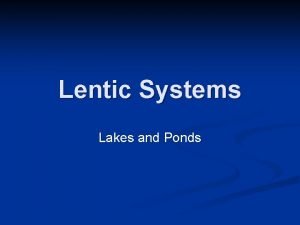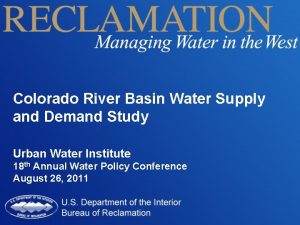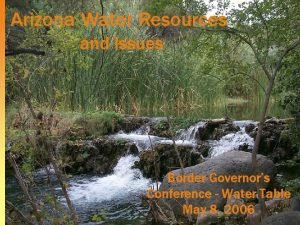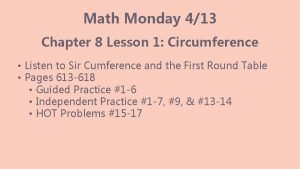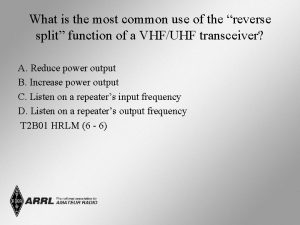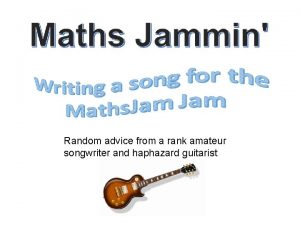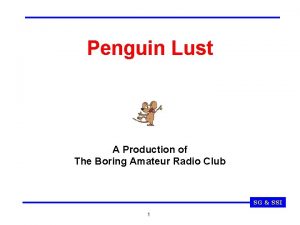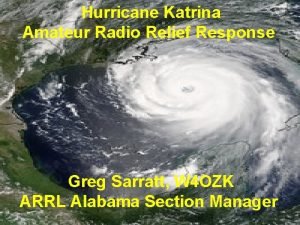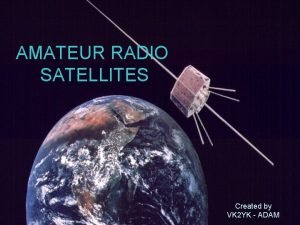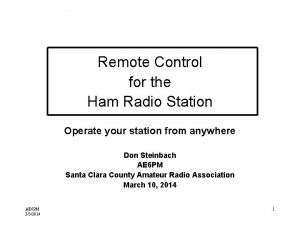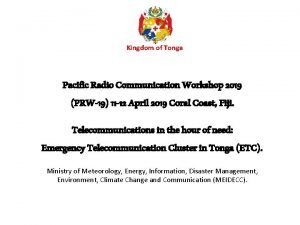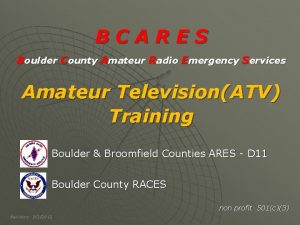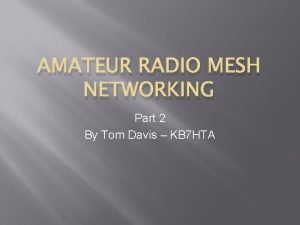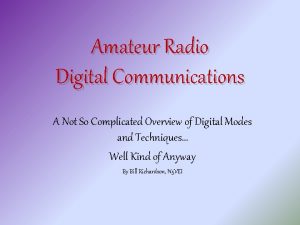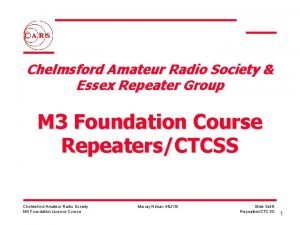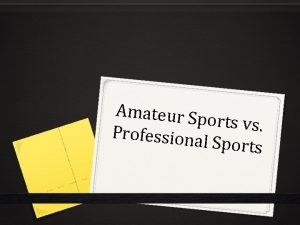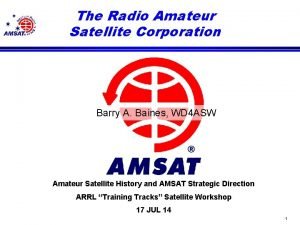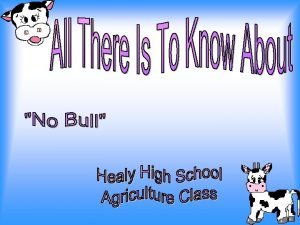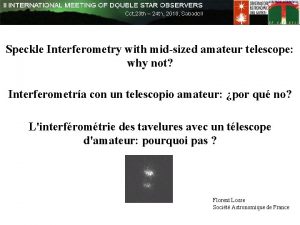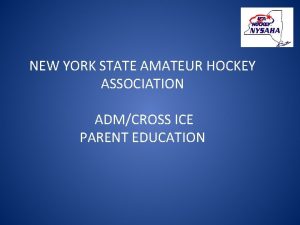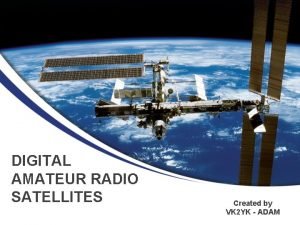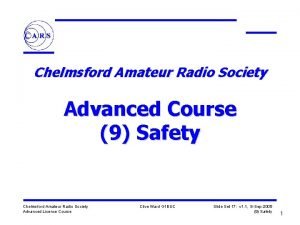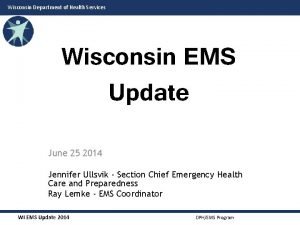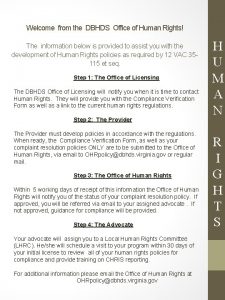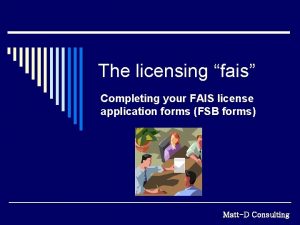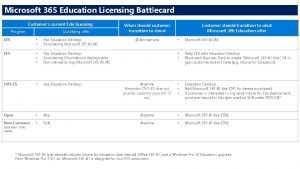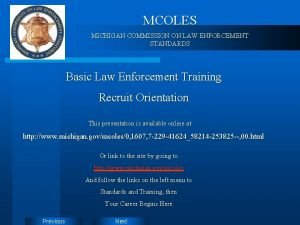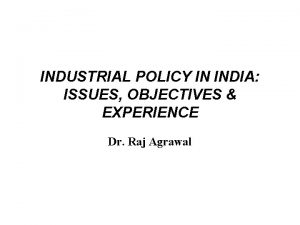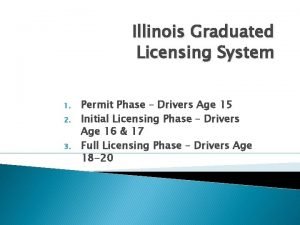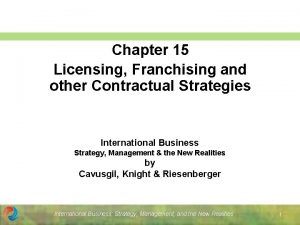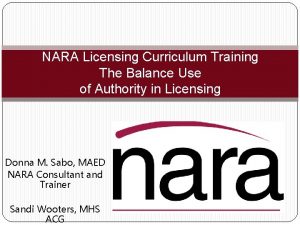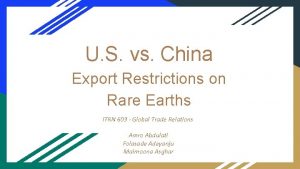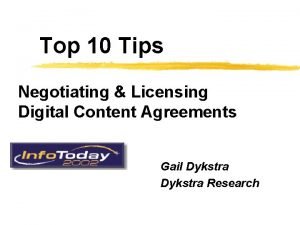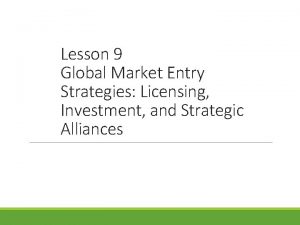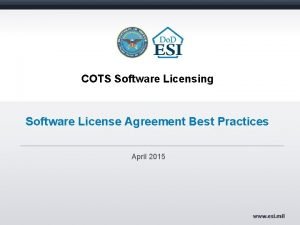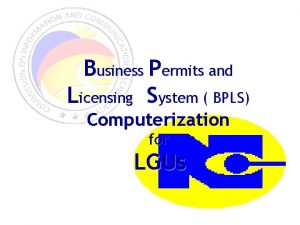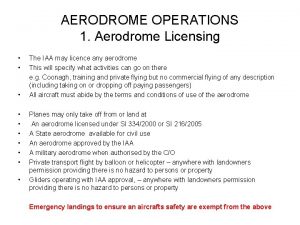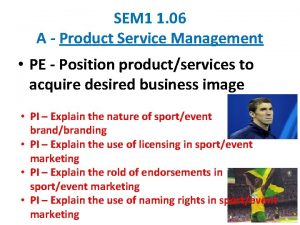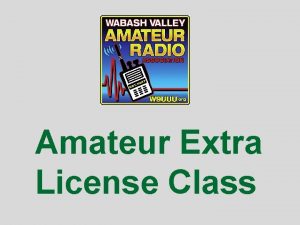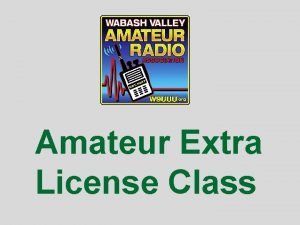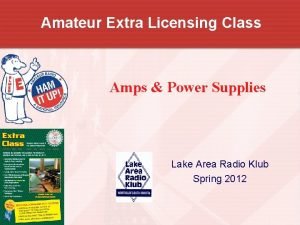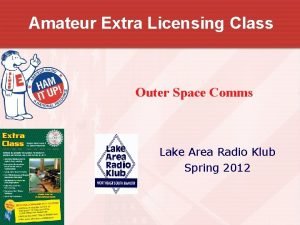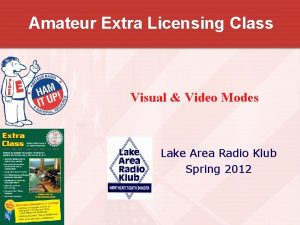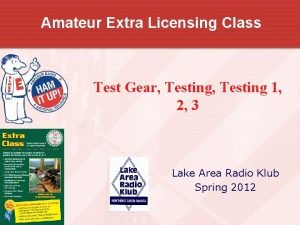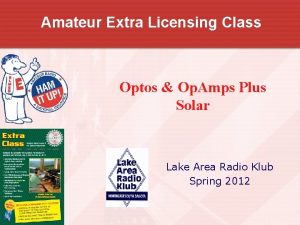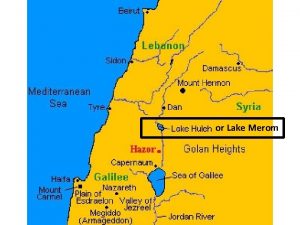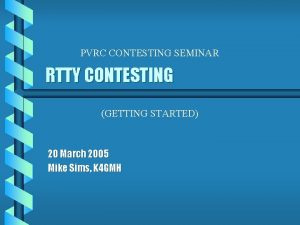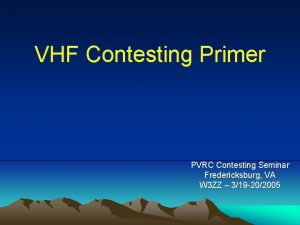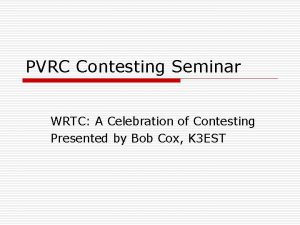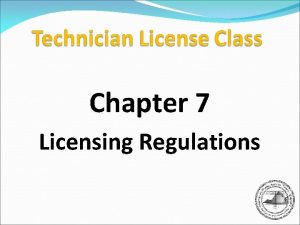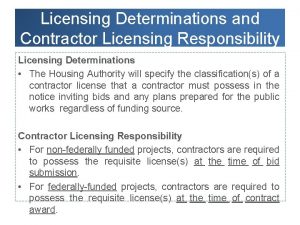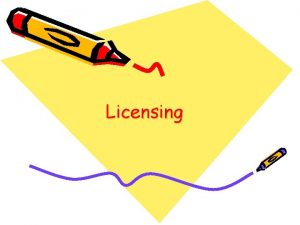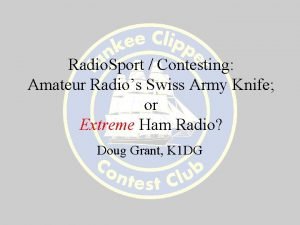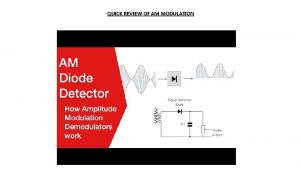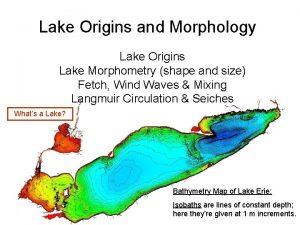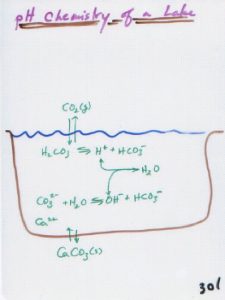Amateur Extra Licensing Class Skywaves Contesting Lake Area


































































- Slides: 66

Amateur Extra Licensing Class Skywaves & Contesting Lake Area Radio Klub Spring 2012

Amateur Radio Extra Class Element 4 Course Presentation Ø ELEMENT 4 Groupings • • Rules & Regs Skywaves & Contesting Outer Space Comms Visuals & Video Modes Digital Excitement with Computers & Radios Modulate Your Transmitters Amps & Power Supplies Receivers with Great Filters

Amateur Radio Extra Class Element 4 Course Presentation Ø ELEMENT 4 Groupings • • Oscillate & Synthesize This! Circuits & Resonance for All! Components in Your New Rig Logically Speaking of Counters Optos & Op. Amps Plus Solar Test Gear, Testing 1, 2, 3 Antennas Feedlines & Safety

Amateur Radio Extra Class Skywaves & Contesting • An electromagnetic wave is a wave consisting of an electric field and a magnetic field oscillating at right angles to each other. E 8 D 07… Radiation Pattern of Radio Waves Around Antenna

Amateur Radio Extra Class Skywaves & Contesting Electromagnetic waves traveling in free space change electric and magnetic fields to propagate the energy. • E 8 D 08… • E 8 D 10… • E 8 D 11… The polarization of an electromagnetic wave when its magnetic field is parallel to the surface of the earth is vertical. The polarization of an electromagnetic wave if its magnetic field is perpendicular to the surface of the Earth is Horizontal. Vertically-Polarized Antenna Horizizontally-Polarized Antenna

Amateur Radio Extra Class Skywaves & Contesting • • • Circularly polarized electromagnetic waves are waves with a rotating electric field. E 8 D 12… Electromagnetic waves travel in free space at approximately 300 million meters per second. (not miles per second) E 3 B 04… Long-path propagation is probably occurring if an HF beam antenna is pointed in a direction 180 degrees away from a station in order to receive the strongest signals. E 3 B 05… The 160 to 10 meter amateur bands typically support long-path propagation. E 3 B 06… The 20 meter amateur band most frequently provides long-path propagation. E 8 D 09… Receipt of a signal by more than one path could account for hearing an echo on the received signal of a distant station. E 3 B 07…

Amateur Radio Extra Class Skywaves & Contesting • The name of the high-angle wave in HF propagation that travels for some distance within the F 2 region is the Pedersen ray. E 3 C 08… Paths 4 and 5 are Pedersen rays or high-angle rays. These rays are not refracted sufficiently to return directly to the earth but don't have a high enough angle to penetrate (like ray 6). They get trapped in the ionosphere often exiting where there is a big gradient in electron density (at dusk and dawn).

Amateur Radio Extra Class Skywaves & Contesting In North America during low sunspot activity, when signals from Europe become weak and fluttery across an entire HF band two to three hours after sunset, it might help to switch to a lower frequency HF band in order to contact other European DX stations. • E 2 C 12… • E 3 B 08… Gray-line propagation is probably occurring if radio signals travel along the terminator between daylight and darkness.

Amateur Radio Extra Class Skywaves & Contesting • The cause of gray-line propagation is at twilight, solar absorption drops greatly, while atmospheric ionization is not weakened enough to reduce the MUF. E 3 B 10… During twilight, the D layer quickly disappears resulting in less absorption, while the E and F layers continue relatively strong. This also happens during solar eclipses Contacts up to 8, 000 to 10, 000 miles on three or four HF bands are possible during gray-line propagation. • E 3 B 11… • E 3 B 09… Gray-line propagation is most prevalent at sunrise and sunset. A gray-line communications path, by definition, follows the daylight/dark “terminator” whenever it happens to exist at any given moment. This means that the communications path involved with gray-line propagation is constrained within the boundaries of the grayline.

Amateur Radio Extra Class Skywaves & Contesting When a meteor strikes the Earth's atmosphere, a cylindrical region of free electrons is formed at the E layer of the ionosphere. • E 3 A 09… • E 3 A 10… • The 28 - 148 MHz range of frequencies is well suited for meteor-scatter communications. E 3 A 11… Transmit and receive time sequencing of 15 -second sequences, where one station transmits for 15 seconds and then receives for the following 15 seconds is normally used on 144 MHz when attempting a meteor-scatter contact.

Amateur Radio Extra Class Skywaves & Contesting • Transequatorial propagation is propagation between two points at approximately the same distance north and south of the magnetic equator. E 3 B 01…

Amateur Radio Extra Class Skywaves & Contesting The characteristics of TEP (Trans Equatorial Propagation): It is thought that TEP arises when there is an increased level of ionization in equatorial regions. This enables signals that enter the ionosphere at the correct angle to be propagated across the equator. In view of the way in which the signals are propagated they must enter the ionosphere virtually in a north south direction, otherwise propagation does not occur. It is also found that signals undergo two reflections by the ionosphere before they are returned to earth.

Amateur Radio Extra Class Skywaves & Contesting • The approximate maximum range for signals using transequatorial propagation is 2500 miles. E 3 B 02… The maximum total distance for a TE contact is 5000 miles. • • • Afternoon or early evening is the best time of day for transequatorial propagation. E 3 C 01… Auroral activity causes radio communication of CW signals to have a fluttery tone. E 3 C 02… The cause of auroral activity is the emission of charged particles from the sun. E 3 B 03… A magnetic filament erupted and hurled a massive coronal mass ejection (CME) off the sun's northwestern limb. (9/4/2010)

Amateur Radio Extra Class Skywaves & Contesting • E 3 C 03… Auroral activity in the ionosphere occurs at E-region height. Lake Michigan Seattle, WA

Amateur Radio Extra Class Skywaves & Contesting • E 3 C 04… • E 3 C 11… • E 3 C 05… The CW emission mode is best for auroral propagation. From within the contiguous 48 states, an antenna should be pointed approximately north to take maximum advantage of auroral propagation. Selective fading is caused by phase differences in the received signal caused by different paths.

Amateur Radio Extra Class Skywaves & Contesting • E 4 E 06… • E 3 C 14… Thunderstorms are a major cause of atmospheric static. Because Radio waves may be bent, the radio-path horizon distance can exceed the geometric horizon (by about 15%). VHF & UHF radio signals will generally travel “line of sight. ” VHF & UHF radio signals are blocked by the curvature of the Earth.

Amateur Radio Extra Class Skywaves & Contesting • VHF/UHF radio-path horizon distance exceeds the geometric horizon by approximately 15% of the distance. E 3 C 06… Radio waves bend slightly over the horizon because of the difference in the air’s refractive index at higher altitudes. Depending on local weather conditions, a 15% to 30% range enhancement over the optical horizon will usually take place at VHF and UHF radio frequency bands.

Amateur Radio Extra Class Skywaves & Contesting • Tropospheric ducting is usually responsible for propagating VHF signals over 500 miles. E 3 C 09… Tropospheric Ducting

Amateur Radio Extra Class Skywaves & Contesting • As the frequency of a signal is increased, its ground wave propagation decreases. E 3 C 12… Ground waves travel further on lower frequencies, so as the frequency of a signal is increased, ground wave propagation is decreased. Fog horns always blast out a very low audio tone due to this condition. • E 3 C 13… Most ground-wave propagation has a Vertical polarization.

Amateur Radio Extra Class Skywaves & Contesting Operators are permitted to make contacts even if they do not submit a log when operating a contest. • E 2 C 01… • E 2 C 05… 14. 310 MHz would generally be acceptable for U. S. stations to work other U. S. stations in a phone contest. 5405 k. Hz (middle of 60 meter band), 50. 050 MHz (CW portion of 6 meters) and 146. 52 MHz (national calling frequency) would generally not be acceptable for U. S. stations to work other U. S. stations in a phone contest • You generally sign your full call sign once or twice when attempting to contact a DX station working a “pileup” or in a contest. E 2 C 11…

Amateur Radio Extra Class Skywaves & Contesting • A phone DX station might state that he or she is listening on another frequency for one or more reasons such as: E 2 C 10… § Because the DX station may be transmitting on a frequency that is prohibited to some responding stations. § To separate the calling stations from the DX station. § To reduce interference, thereby improving operating efficiency. • E 2 C 07… files. The Cabrillo format is a standard for organizing information in contest log http: //www. cqwpx. com/cabrillo. htm for the Cabrillo Format. • The generally prohibited practice of posting one’s own call sign and frequency on a call sign spotting network is described as “self spotting” in regards to contest operation. E 2 C 02…

Amateur Radio Extra Class Skywaves & Contesting • • During a VHF/UHF contest you would expect to find the highest level of activity in the weak signal segment of the band, with most of the activity near the calling frequency. E 2 C 06… E 2 C 04… Band Calling Frequency 6 meters 2 meters 1. 25 70 cm 35 cm 23 cm 50. 125 MHz 144. 200 MHz 222. 1 MHz 432. 100 MHz 902. 100 MHz 1296. 100 MHz An amateur radio contest contact is generally discouraged on 146. 52 MHz The national 2 meter calling frequency. • E 2 C 03… Amateur radio contesting is generally excluded on 30 meters.

Element 4 Extra Class Question Pool Skywaves & Contesting Valid July 1, 2008 Through June 30, 2012

E 8 D 07 What is an electromagnetic wave? A. Alternating currents in the core of an electromagnet B. A wave consisting of two electric fields at right angles to each other C. A wave consisting of an electric field and a magnetic field oscillating at right angles to each other D. A wave consisting of two magnetic fields at right angles to each other

Which of the following best describes electromagnetic waves traveling in free space? E 8 D 08 A. Electric and magnetic fields become aligned as they travel B. The energy propagates through a medium with a high refractive index C. The waves are reflected by the ionosphere and return to their source D. Changing electric and magnetic fields propagate the energy

What is the polarization of an electromagnetic wave if its magnetic field is parallel to the surface of the Earth? E 8 D 10 A. B. C. D. Circular Horizontal Elliptical Vertical

What is the polarization of an electromagnetic wave if its magnetic field is perpendicular to the surface of the Earth? E 8 D 11 A. B. C. D. Horizontal Circular Elliptical Vertical

E 8 D 09 What is meant by circularly polarized electromagnetic waves? A. Waves with an electric field bent into a circular shape B. Waves with a rotating electric field C. Waves that circle the Earth D. Waves produced by a loop antenna

At approximately what speed do electromagnetic waves travel in fre space? E 8 D 12 A. B. C. D. 300 million meters per second 186, 300 feet per second 300 million miles per second

What type of propagation is probably occurring if an HF beam antenna must be pointed in a direction 180 degrees away from a station to receive the strongest signals? E 3 B 04 A. B. C. D. Long-path Sporadic-E Transequatorial Auroral

Which amateur bands typically support longpath propagation? E 3 B 05 A. B. C. D. 160 to 40 meters 30 to 10 meters 160 to 10 meters 6 meters to 2 meters

Which of the following amateur bands most frequently provides long-path propagation? E 3 B 06 A. B. C. D. 80 meters 20 meters 10 meters 6 meters

Which of the following could account for hearing an echo on the received signal of a distant station? E 3 B 07 A. B. C. D. High D layer absorption Meteor scatter Transmit frequency is higher than the MUF Receipt of a signal by more than one path

What is the name of the high-angle wave in HF propagation that travels for some distance within the F 2 region? E 3 C 08 A. B. C. D. Oblique-angle ray Pedersen ray Ordinary ray Heaviside ray

In North America during low sunspot activity, when signals from Europe become weak and fluttery across an entire HF band two to three hours after sunset, what might help to contact other European DX stations? E 2 C 12 A. B. C. D. Switch to a higher frequency HF band Switch to a lower frequency HF band Wait 90 minutes or so for the signal degradation to pass Wait 24 hours before attempting another communication on the band

What type of propagation is probably occurring if radio signals travel along the terminator between daylight and darkness? E 3 B 08 A. B. C. D. Transequatorial Sporadic-E Long-path Gray-line

E 3 B 10 What is the cause of gray-line propagation? A. At midday, the sun, being directly overhead, superheats the ionosphere causing increased refraction of radio waves B. At twilight, solar absorption drops greatly, while atmospheric ionization is not weakened enough to reduce the MUF C. At darkness, solar absorption drops greatly, while atmospheric ionization remains steady D. At mid afternoon, the sun heats the ionosphere, increasing radio wave refraction and the MUF

What communications are possible during gray-line propagation? E 3 B 11 A. Contacts up to 2, 000 miles only on the 10 -meter band B. Contacts up to 750 miles on the 6 - and 2 -meter bands C. Contacts up to 8, 000 to 10, 000 miles on three or four HF bands D. Contacts up to 12, 000 to 15, 000 miles on the 2 meter and 70 centimeter bands

At what time of day is gray-line propagation most prevalent? E 3 B 09 A. At sunrise and sunset B. When the sun is directly above the location of the transmitting station C. When the sun is directly overhead at the middle of the communications path between the two stations D. When the sun is directly above the location of the receiving station

When a meteor strikes the Earth's atmosphere, a cylindrical region of free electrons is formed at what layer of the ionosphere? E 3 A 09 A. B. C. D. The E layer The F 1 layer The F 2 layer The D layer

Which range of frequencies is well suited for meteor-scatter communications? E 3 A 10 A. B. C. D. 1. 8 - 1. 9 MHz 10 - 14 MHz 28 - 148 MHz 220 - 450 MHz

What transmit and receive time sequencing is normally used on 144 MHz when attempting a meteor-scatter contact? E 3 A 11 A. Two-minute sequences, where one station transmits for a full two minutes and then receives for the following two minutes B. One-minute sequences, where one station transmits for one minute and then receives for the following one minute C. 15 -second sequences, where one station transmits for 15 seconds and then receives for the following 15 seconds D. 30 -second sequences, where one station transmits for 30 seconds and then receives for the following 30 seconds

E 3 B 01 What is transequatorial propagation? A. Propagation between two points at approximately the same distance north and south of the magnetic equator B. Propagation between any two points located on the magnetic equator C. Propagation between two continents by way of ducts along the magnetic equator D. Propagation between two stations at the same latitude

What is the approximate maximum range for signals using transequatorial propagation? E 3 B 02 A. B. C. D. 1000 miles 2500 miles 5000 miles 7500 miles

What is the best time of day for transequatorial propagation? E 3 B 03 A. B. C. D. Morning Noon Afternoon or early evening Late at night

What effect does auroral activity have on radio communications? E 3 C 01 A. B. C. D. Signals experience long-delay echo FM communications are clearer CW signals have a clearer tone CW signals have a fluttery tone

E 3 C 02 What is the cause of auroral activity? A. B. C. D. Reflections in the solar wind A low sunspot level The emission of charged particles from the sun Meteor showers concentrated in the northern latitudes

Where in the ionosphere does auroral activity occur? E 3 C 03 A. B. C. D. At F-region height In the equatorial band At D-region height At E-region height

Which emission mode is best for auroral propagation? E 3 C 04 A. B. C. D. CW SSB FM RTTY

From the contiguous 48 states, in which approximate direction sho an antenna be pointed to take maximum advantage of auroral propagation? E 3 C 11 A. B. C. D. South North East West

E 3 C 05 What causes selective fading? A. Small changes in beam heading at the receiving station B. Phase differences in the received signal caused by different paths C. Large changes in the height of the ionosphere D. Time differences between the receiving and transmitting stations

E 4 E 06 What is a major cause of atmospheric static? A. B. C. D. Solar radio frequency emissions Thunderstorms Geomagnetic storms Meteor showers

Why does the radio-path horizon distance exceed the geometric horizon? E 3 C 14 A. B. C. D. E-region skip D-region skip Auroral skip Radio waves may be bent

How much farther does the VHF/UHF radio-path horizon distance exceed the geometric horizon? E 3 C 06 A. B. C. D. By approximately 15% of the distance By approximately twice the distance By approximately one-half the distance By approximately four times the distance

What effect is usually responsible for propagating a VHF signal over 500 miles? E 3 C 09 A. B. C. D. D-region absorption Faraday rotation Tropospheric ducting Moonbounce

As the frequency of a signal is increased, how does its ground wave propagation change? E 3 C 12 A. B. C. D. It increases It decreases It stays the same Radio waves don't propagate along the Earth's surface

What type of polarization does most groundwave propagation have? E 3 C 13 A. B. C. D. Vertical Horizontal Circular Elliptical

Which of the following is true about contest operating? E 2 C 01 A. Operators are permitted to make contacts even if they do not submit a log B. Interference to other amateurs is unavoidable and therefore acceptable C. It is mandatory to transmit the call sign of the station being worked as part of every transmission to that station D. Every contest requires a signal report in the exchange

Which of the following frequencies would generally be acceptable for U. S. stations to work other U. S. stations in a phone contest? E 2 C 05 A. B. C. D. 5405 k. Hz 14. 310 MHz 50. 050 MHz 146. 52 MHz

E 2 C 11 How should you generally sign your call when attempting to contact a DX station working a “pileup” or in a contest? A. Send your full call sign once or twice B. Send only the last two letters of your call sign until you make contact C. Send your full call sign and grid square D. Send the call sign of the DX station three times, the words "this is", then your call sign three times

Why might a phone DX station state that he is listening on another frequency? E 2 C 10 A. Because the DX station may be transmitting on a frequency that is prohibited to some responding stations B. To separate the calling stations from the DX station C. To reduce interference, thereby improving operating efficiency D. All of these choices are correct

E 2 C 07 What is the Cabrillo format? A. A standard for organizing information in contest log files B. A method of exchanging information during a contest QSO C. The most common set of contest rules D. The rules of order for meetings between contest sponsors

Which of the following best describes “self spotting” in regards to contest operating? E 2 C 02 A. The generally prohibited practice of posting one’s own call sign and frequency on a call sign spotting network B. The acceptable practice of manually posting the call signs of stations on a call sign spotting network C. A manual technique for rapidly zero beating or tuning to a station’s frequency before calling that station D. An automatic method for rapidly zero beating or tuning to a station’s frequency before calling that station

During a VHF/UHF contest, in which band segment would you expect to find the highest level of activity? E 2 C 06 A. At the top of each band, usually in a segment reserved for contests B. In the middle of each band, usually on the national calling frequency C. In the weak signal segment of the band, with most of the activity near the calling frequency D. In the middle of the band, usually 25 k. Hz above the national calling frequency

On which of the following frequencies is an amateur radio contest contact generally discouraged? E 2 C 04 A. B. C. D. 3. 525 MHz 14. 020 MHz 28. 330 MHz 146. 52 MHz

From which of the following bands is amateur radio contesting generally excluded? E 2 C 03 A. B. C. D. 30 meters 6 meters 2 meters 33 cm
 Oligotrophic vs eutrophic lakes
Oligotrophic vs eutrophic lakes Lake powell and lake mead
Lake powell and lake mead Lake powell and lake mead
Lake powell and lake mead Think central
Think central Where may ssb phone be used in amateur bands above 50 mhz?
Where may ssb phone be used in amateur bands above 50 mhz? Random amateur
Random amateur Lust production sg
Lust production sg Katrina amateur
Katrina amateur Orbiting jupiter vk
Orbiting jupiter vk Amateur revenge porn
Amateur revenge porn Ham radio remote
Ham radio remote Tonga hf radio
Tonga hf radio Bcares
Bcares Ubnt link calc
Ubnt link calc Amateur radio digital communications
Amateur radio digital communications Chelmsford amateur radio society
Chelmsford amateur radio society Amateur sp
Amateur sp Amateur sdx
Amateur sdx Japanese amateur hot
Japanese amateur hot Amateur teacher student
Amateur teacher student Insemination amateur
Insemination amateur Telescopio amateur
Telescopio amateur New york state amateur hockey association
New york state amateur hockey association Vk amateur
Vk amateur Chelmsford amateur radio society
Chelmsford amateur radio society Chelmsford amateur radio society
Chelmsford amateur radio society Amateur radio mesh network
Amateur radio mesh network Wi ems wards
Wi ems wards Backup exec 21
Backup exec 21 Dbhds human rights
Dbhds human rights Fais licensing requirements
Fais licensing requirements Kenyon qualtrics
Kenyon qualtrics Qlikview license
Qlikview license Module 4 - open source software and licensing
Module 4 - open source software and licensing Outlook 365365
Outlook 365365 Michigan mcoles test
Michigan mcoles test Louisiana department of health health standards section
Louisiana department of health health standards section Licensing sports marketing
Licensing sports marketing 2005/lml/18/8
2005/lml/18/8 Industries requiring compulsory licensing *
Industries requiring compulsory licensing * Explain the permit phase.
Explain the permit phase. Utah daycare licensing
Utah daycare licensing Licensing franchising and other contractual strategies
Licensing franchising and other contractual strategies Bookstore umw
Bookstore umw Oregon health licensing agency
Oregon health licensing agency Mvls connexion
Mvls connexion Spla reporting
Spla reporting Nara licensing
Nara licensing School business administrator licensing
School business administrator licensing Natural health product regulations
Natural health product regulations Mvls microsoft
Mvls microsoft Export licensing requirements
Export licensing requirements Digital content licensing
Digital content licensing Georgia child care licensing regulations
Georgia child care licensing regulations Michigan licensing and regulatory affairs
Michigan licensing and regulatory affairs Entry strategy licensing
Entry strategy licensing Ibm pvu sub capacity licensing
Ibm pvu sub capacity licensing Entry strategy licensing
Entry strategy licensing Ga form 3231 blank
Ga form 3231 blank Export licensing requirements
Export licensing requirements Licensing and regulation division
Licensing and regulation division Oracle licensing workshops
Oracle licensing workshops Software licensing best practices
Software licensing best practices Business permit and licensing system
Business permit and licensing system Iaa licensing
Iaa licensing Msdn price
Msdn price Explain the use of licensing in.sport/event marketing
Explain the use of licensing in.sport/event marketing
